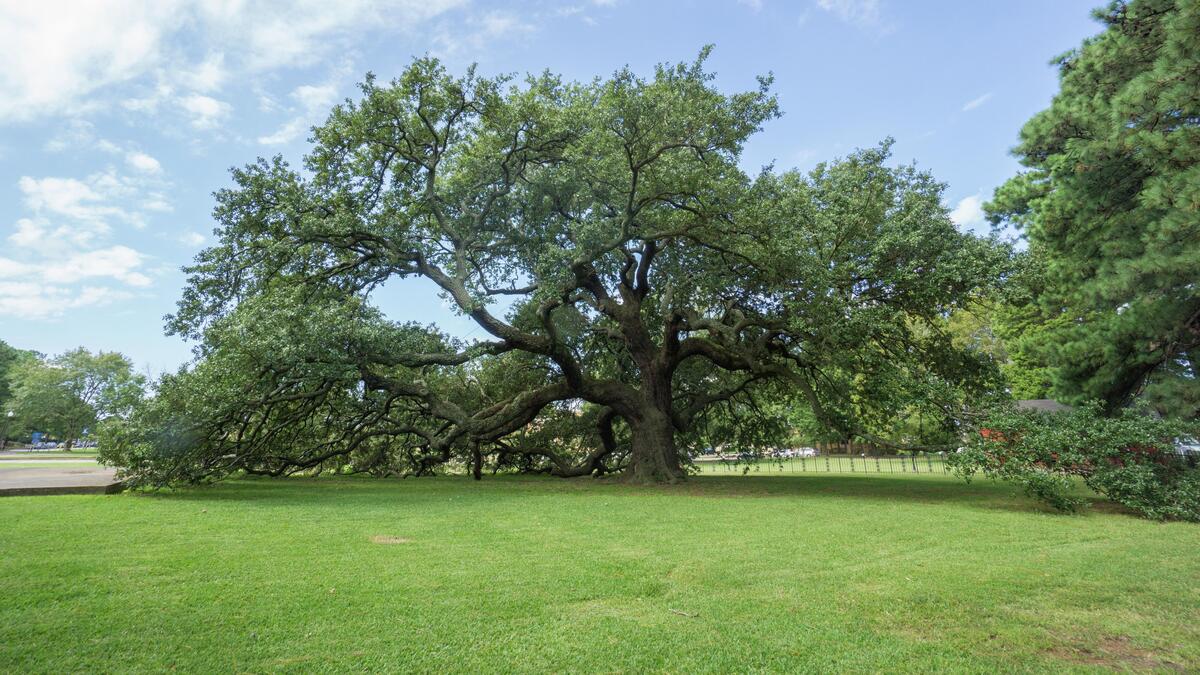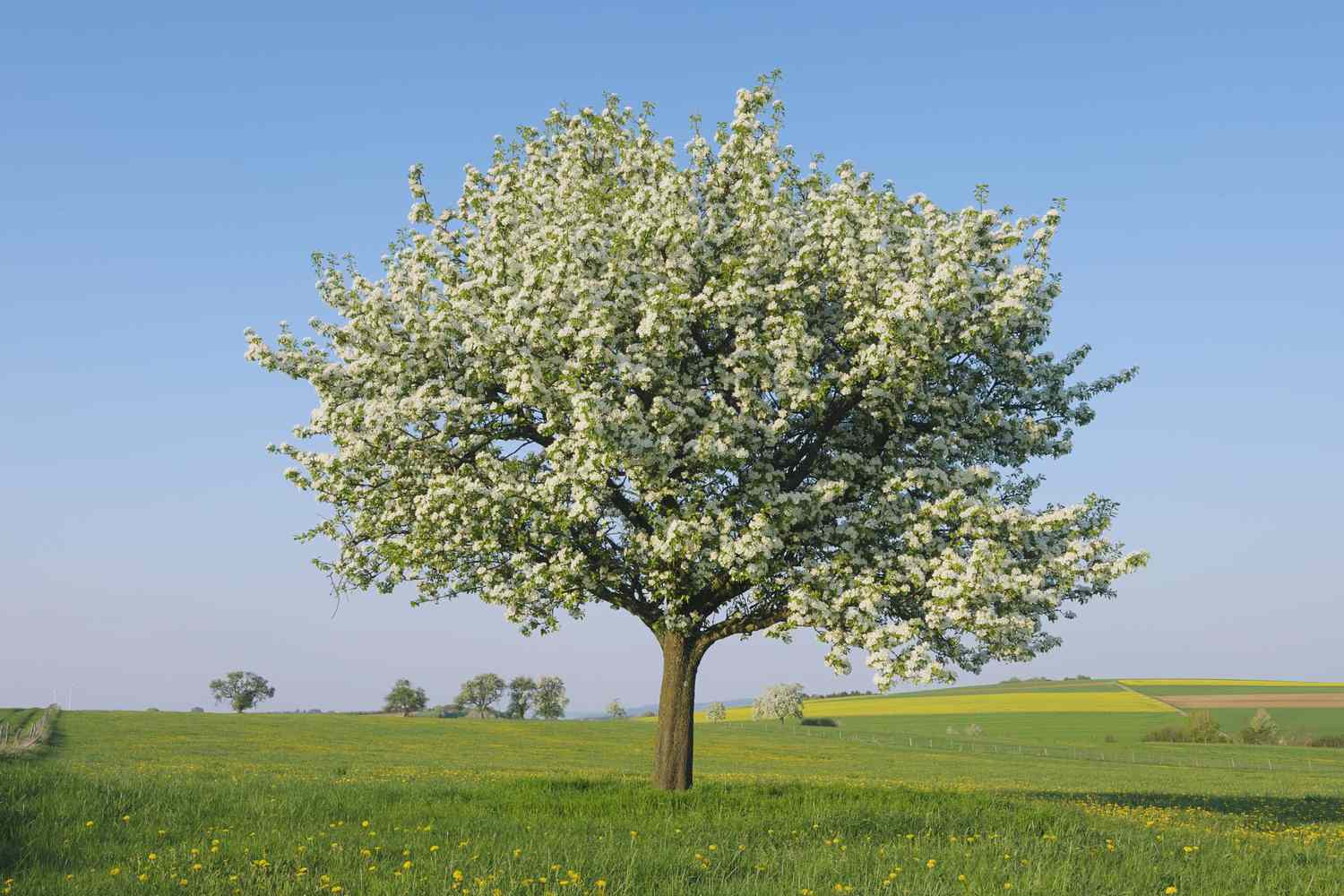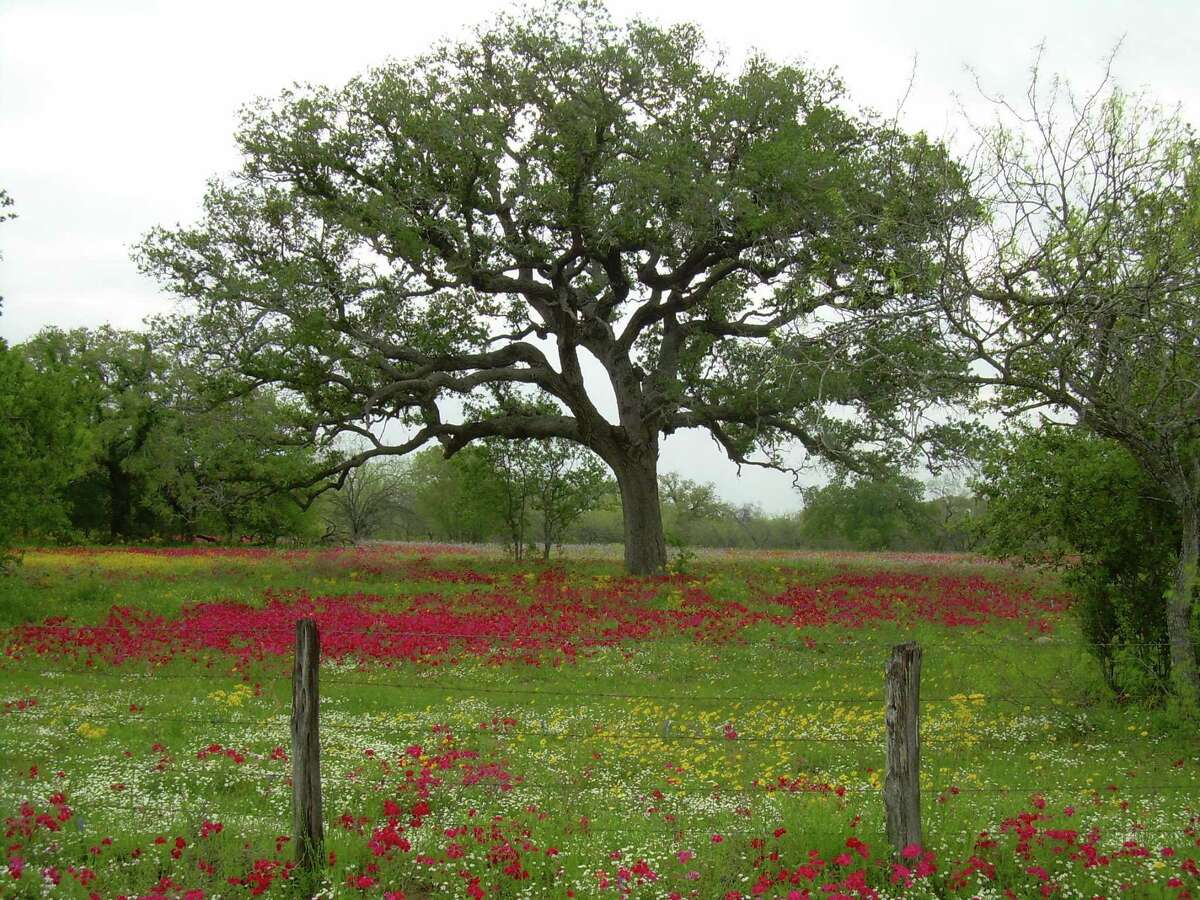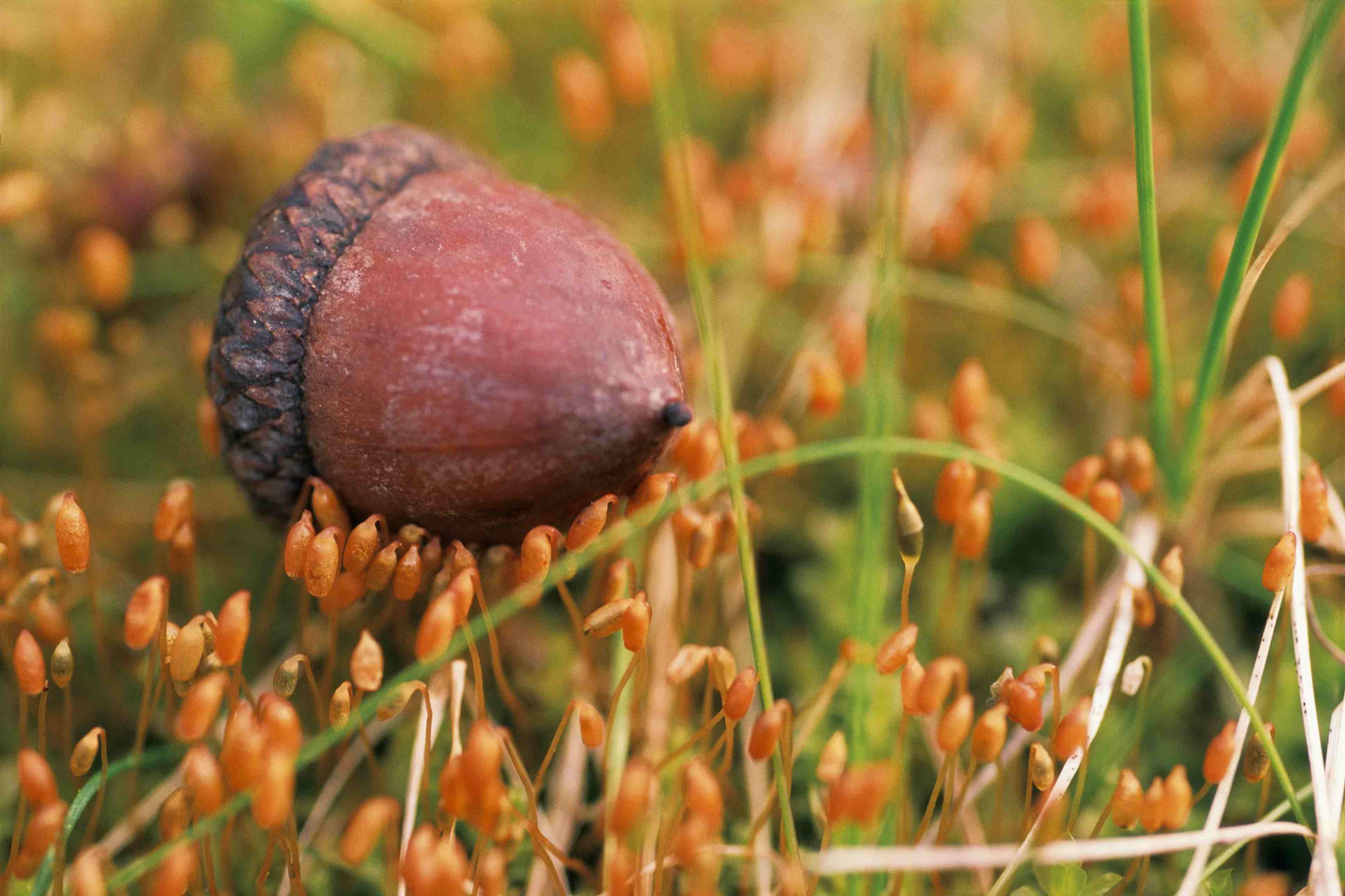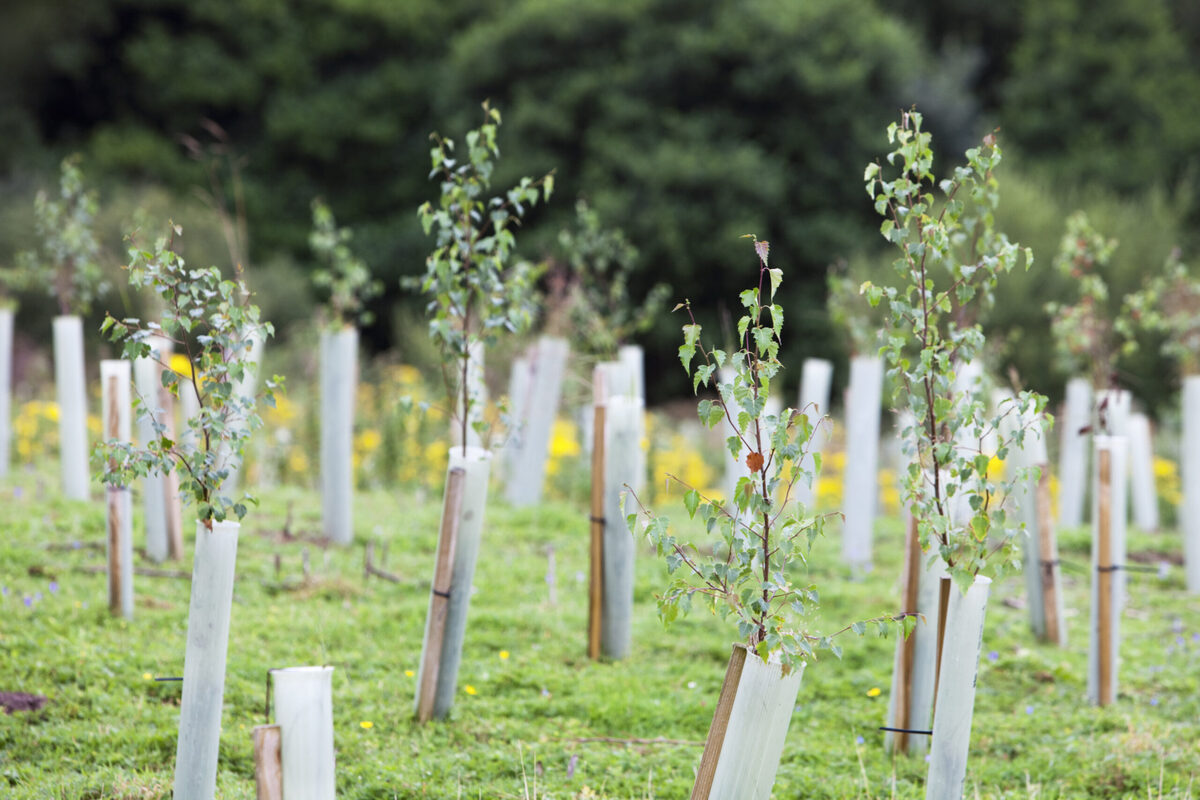Home>Types of Gardening>Ornamental Gardening>When Do Oak Trees Drop Acorns


Ornamental Gardening
When Do Oak Trees Drop Acorns
Modified: January 22, 2024
Discover the timing of acorn drop in oak trees for your ornamental gardening needs. Learn when to expect an abundance of acorns and plan accordingly.
(Many of the links in this article redirect to a specific reviewed product. Your purchase of these products through affiliate links helps to generate commission for Chicagolandgardening.com, at no extra cost. Learn more)
Table of Contents
Introduction
Oak trees are iconic symbols of strength and beauty in the world of ornamental gardening. These majestic trees not only provide shade and enhance the aesthetic appeal of landscapes, but they also hold a special fascination for their production of acorns.
Acorns, the fruits of oak trees, have been an essential part of ecosystems for centuries. They serve as a vital food source for wildlife, contribute to the dispersal of oak tree species, and even have historical significance in human cultures. Understanding when oak trees drop their acorns and the factors that influence this process can provide valuable insights for gardeners and enthusiasts alike.
This article will delve into the timing of acorn dropping in oak trees, exploring the various factors that influence this phenomenon. We will also discuss the environmental conditions that affect acorn production, the synchronization of acorn dropping among oak trees, the benefits of acorn dropping, and the interactions between animals and acorns. Finally, we will touch upon the ways in which humans utilize acorns in ornamental gardening practices.
Factors Influencing Acorn Dropping
The dropping of acorns from oak trees is influenced by a combination of internal and external factors. Understanding these factors can help gardeners anticipate the timing of acorn dropping and plan accordingly.
One of the key factors that influence acorn dropping is the age and health of the oak tree. Mature trees are more likely to produce a larger number of acorns and release them at a predictable time. Younger or stressed trees may produce fewer acorns or drop them earlier than expected.
Another crucial factor is the species of oak tree. Different oak species have varying characteristics and patterns of acorn dropping. Some species, such as the northern red oak, drop their acorns in late summer or early fall, while others, like the white oak, may hold onto their acorns until the following spring. Understanding the specific traits of the oak species in your garden can help you predict when to expect acorn dropping.
Environmental conditions also play a significant role in determining when acorns are dropped. Adequate rainfall and temperature fluctuations trigger the development and maturation of acorns. A lack of water or extreme heat can cause premature dropping or stunted acorn development. Additionally, factors such as wind patterns and the availability of pollinators can influence the success of pollination and subsequent acorn production.
Furthermore, the availability of resources within the oak tree itself can affect acorn dropping. Trees that have produced a large crop of acorns in previous years may have reduced energy reserves, leading to smaller acorn production and premature dropping. Conversely, trees that have an abundance of nutrients and energy reserves may yield a higher number of acorns and hold onto them longer.
Overall, a combination of factors including tree age, species characteristics, environmental conditions, and internal resources influence the dropping of acorns from oak trees. By considering these factors, gardeners can anticipate when acorns will be available in their gardens, providing opportunities for wildlife interactions, propagation, and ornamental displays.
Seasonal Timing of Acorn Dropping
The seasonal timing of acorn dropping varies among oak tree species and is influenced by climate and environmental cues. While there is some variation, acorn dropping generally occurs in the late summer to early fall period, with a few exceptions.
In many oak species, the process begins with the pollination of flowers in the spring. Following successful pollination, acorns start to develop and undergo maturation throughout the summer months. The exact timing can vary depending on the species, but it is common for the acorns to reach full maturity by late summer or early fall.
The actual acorn dropping happens as a response to environmental cues such as changes in temperature and photoperiod. When the conditions are favorable, the peduncle, or stem, connecting the acorn to the tree, weakens and eventually breaks. This allows the acorns to fall from the tree and begin their journey on the ground.
While the late summer to early fall period is the general timeframe for acorn dropping, it is important to note that some oak species may have variations. For instance, the white oak (Quercus alba) is known to hold onto its acorns for a longer period, sometimes even until the following spring. This delayed dropping of acorns is called marcescence and is a characteristic unique to certain oak species.
Additionally, certain environmental conditions may impact the seasonal timing of acorn dropping. In years with drought or extreme heat, oak trees may drop their acorns earlier than usual as a response to stress. Conversely, in years with favorable weather conditions, acorn dropping may be delayed, allowing for a longer window of food availability for wildlife.
Understanding the typical seasonal timing of acorn dropping is beneficial for gardeners and wildlife enthusiasts. It allows for better planning in terms of planting companion species or creating feeding areas for wildlife during times of acorn scarcity. The seasonal beauty of oak trees adorned with acorns also adds to the ornamental appeal of gardens, making it a delightful spectacle for those who appreciate the wonders of nature.
Environmental Conditions and Acorn Production
The production of acorns in oak trees is greatly influenced by the surrounding environmental conditions. Factors such as temperature, rainfall, and soil quality play a crucial role in determining the quantity and quality of acorns produced.
Adequate rainfall is essential for the development of acorns. Insufficient water can lead to smaller acorn size and lower overall production. Additionally, irregular patterns of rainfall, such as drought followed by heavy rain, can disrupt the maturation and dropping process of acorns. Consistent and well-distributed rainfall throughout the growing season promotes healthy acorn production.
Temperature also affects acorn production. Oak trees require a certain amount of chilling hours during the winter to break dormancy and promote healthy growth and acorn development in the following year. Conversely, extreme heat during the summer months can negatively impact acorn production, leading to smaller and less viable acorns.
Soil quality and nutrient availability are critical for robust acorn production. The presence of fertile soil with a balanced nutrient composition provides the necessary resources for healthy tree growth and acorn development. Soil pH levels also play a role, with most oak species preferring slightly acidic to neutral soil conditions.
Sunlight exposure is another environmental factor that can impact acorn production. Like most plants, oak trees require sufficient sunlight for photosynthesis, which fuels their growth and development. Trees growing in areas with limited sunlight may produce fewer acorns or have delayed maturation.
Additionally, the presence of pests and diseases can affect acorn production in oak trees. Insect infestations, such as the oak gall wasp, can damage the development of acorns, leading to lower production. Diseases, such as oak wilt or powdery mildew, can also impact the health of oak trees, reducing their ability to produce viable acorns.
By considering these environmental conditions and taking steps to optimize them, gardeners and land managers can promote healthy acorn production in oak trees. Providing proper irrigation, ensuring adequate soil nutrition, controlling pests and diseases, and managing tree spacing to allow for optimal sunlight exposure are all strategies that can enhance acorn production and contribute to a thriving ecosystem.
Acorn Synchronization among Oak Trees
Acorn synchronization refers to the phenomenon where oak trees in a given area drop their acorns at around the same time. This synchronization has both ecological and evolutionary significance, ensuring the best chances of successful reproduction and survival for oak tree species.
One of the main reasons for acorn synchronization is the reliance on wind for dispersal. By dropping their acorns simultaneously, oak trees increase the likelihood that the wind will carry the acorns to new areas, helping to expand the species’ range and reduce competition for limited resources.
Acorn synchronization is influenced by a variety of factors, including genetic factors and environmental cues. Genetic factors play a role in determining the inherent timing of acorn dropping for different oak tree species. However, environmental cues such as temperature, rainfall patterns, and photoperiod also play a significant role in synchronizing acorn dropping among individual trees within a species.
Environmental cues can help ensure that acorn dropping coincides with optimal conditions for germination and seedling establishment. By synchronizing acorn dropping, oak trees increase the chances of successful reproduction, as the acorns will have a higher likelihood of encountering suitable conditions for growth, such as moist soil and favorable temperatures.
Furthermore, acorn synchronization helps to facilitate efficient resource utilization, both for the oak trees themselves and the wildlife that depend on acorns for food. When acorns drop in abundance and in a synchronized manner, it creates a concentrated food source for animals such as squirrels, deer, and birds. This synchronized availability of food helps sustain these animal populations during times of scarcity.
The degree of acorn synchronization can vary among oak species and geographic regions. Some species exhibit strong synchronization, with the majority of trees dropping their acorns within a narrow timeframe. In contrast, other species may show more fluctuation in acorn dropping, with individual trees releasing their acorns at different times throughout the season.
Understanding acorn synchronization is not only important for oak tree populations but also for wildlife management and conservation efforts. By identifying key factors that influence synchronization, researchers and land managers can develop strategies to promote acorn availability and ensure the survival of both oak trees and the dependent wildlife species.
Benefits of Acorn Dropping
The dropping of acorns from oak trees serves a variety of important ecological roles, benefiting both the oak tree species and the surrounding ecosystem. Let’s explore some of the key benefits of acorn dropping.
One of the primary benefits is the role of acorns as a vital food source for a wide range of wildlife. Many animals, including squirrels, deer, birds, and rodents, rely on acorns as a significant part of their diet. Acorns provide valuable nutrients, fats, and proteins, especially during the fall and winter when other food sources may be scarce. The dropping of acorns ensures that these animals have access to a reliable and abundant food source, helping them survive and maintain healthy populations.
Acorn dropping also promotes seed dispersal and the regeneration of oak tree populations. When acorns fall from the trees, they have the opportunity to be carried by wind, water, or animal dispersers to new areas. This dispersal mechanism helps spread the genetic diversity of oak trees and allows for the establishment of new oak tree saplings. The dropping of acorns ensures that the potential for future generations of oak trees remains strong.
In addition, the presence of fallen acorns on the ground contributes to the nutrient cycling and soil health within ecosystems. As the acorns decompose, they release valuable nutrients back into the soil, enriching it and providing essential resources for other plants. The decomposing acorns also contribute to the development of a diverse soil microbiome, which supports overall ecosystem health and vitality.
The dropping of acorns can also have beneficial effects on the forest floor’s microhabitat. Fallen acorns create hiding places and shelter for small animals, including insects and invertebrates. They also provide nesting materials and protective cover for small mammals, such as mice and chipmunks. This microhabitat, created by the presence of fallen acorns, contributes to the overall biodiversity and ecological balance of the ecosystem.
Finally, the dropping of acorns adds aesthetic appeal to ornamental gardens and natural landscapes. The sight of oak trees adorned with acorns is iconic and evokes a sense of natural beauty and maturity. The seasonal cycle of acorn dropping adds rhythm and variety to the landscape, enhancing the visual experience for observers and garden enthusiasts.
The benefits of acorn dropping extend beyond the oak tree species themselves, playing a vital role in supporting wildlife, promoting seed dispersal and regeneration, enriching soil health, creating microhabitats, and adding aesthetic value to our environments. Understanding and appreciating these benefits can help foster a greater appreciation for the ecological significance of acorns and oak trees in our ornamental gardening practices and conservation efforts.
Animal Interactions with Acorns
Acorns are a valuable food resource for a wide variety of animals, contributing to intricate ecological interactions within natural ecosystems. Numerous species have evolved to depend on acorns as an important part of their diet, and their interactions with acorns play a crucial role in shaping both their populations and their surrounding environments.
Squirrels are perhaps the most well-known animals associated with acorns. These nimble creatures are highly skilled at locating, gathering, and burying acorns in various locations, serving as nature’s little gardeners. Squirrels play a vital role in oak tree reproduction by unintentionally dispersing acorns they fail to retrieve. The acorns they bury and subsequently forget or fail to retrieve can germinate and grow into new oak tree saplings.
Deer are another important consumer of acorns. These large herbivores rely on acorns as a critical source of nutrition, especially during the fall and winter when other food sources are scarce. Acorns provide essential carbohydrates and fats that help deer sustain their energy levels and survive through challenging seasons. The availability and abundance of acorns can influence deer populations and their movements within their natural habitats.
Birds, such as jays, woodpeckers, and wild turkeys, also play a role in acorn dispersal. Some birds feed on acorns directly, while others stash them in caches for future use. These caches act as a natural storage system, ensuring a food supply during times of scarcity. Birds that fail to retrieve all their caches contribute to the dispersal of acorns, aiding in the establishment of new oak tree saplings.
Rodents, including mice and chipmunks, are known to cache and hoard acorns in their burrows. They rely on these stored acorns as a food source during the winter months when fresh food is limited. Rodents play a crucial role in acorn dispersal by unintentionally leaving behind acorns while they forage or by forgetting the locations of their caches. Inadvertently, they contribute to the spread of oak tree seeds and the regeneration of oak tree populations.
Additionally, insects and invertebrates interact with acorns by utilizing them as a food source or as a place to lay eggs. Many beetles, weevils, and ants selectively feed on or live within acorns, benefiting from the rich nutrients they provide. These interactions contribute to the decomposition and recycling of acorns, further supporting the health and balance of the ecosystem.
The interactions between animals and acorns have profound effects on the distribution, abundance, and diversity of both oak trees and the associated animal species. By consuming, dispersing, or caching acorns, animals contribute to the survival and reproduction of oak trees while ensuring their own sustenance. These intricate relationships highlight the interconnectedness of species within ecosystems and demonstrate the essential role acorns play in supporting a diverse and thriving natural world.
Human Uses of Acorns
While acorns are primarily known for their importance in wildlife and natural ecosystems, they also have a long history of human use. Throughout various cultures and regions around the world, acorns have been utilized for a wide range of purposes.
One of the most common uses of acorns by humans is as a food source. However, it’s important to note that acorns contain tannins, bitter substances that need to be leached out before they are edible. Traditional methods of leaching involve soaking the acorns in water or boiling them multiple times to remove the tannins. Once leached, acorns can be ground into a flour or meal and used in baking or cooking. Acorn-derived foods have been incorporated into recipes for breads, cakes, soups, and even alcoholic beverages.
Acorns have been a staple food source for Indigenous communities around the world for centuries. Native American tribes, such as the Wintu and Miwok in California, have traditionally relied on acorns as a dietary staple. In Korea, acorn jelly known as “dotorimuk” is a popular dish enjoyed for its unique taste and nutritional benefits. The consumption of acorns provides a sustainable and locally available food source that connects people to their natural surroundings and traditional cultural practices.
Beyond their culinary uses, acorns have found applications in various other human endeavors. The high tannin content of acorns has made them valuable for their astringent properties. Historically, acorns have been used in the production of natural dyes for fabrics and tanning animal hides. The astringent qualities of acorns have also been utilized in traditional medicine for treating ailments such as diarrhea, inflammation, and even as a topical remedy for gout and skin conditions.
Acorns have also been employed in craft and artistic pursuits. The distinctive shape, texture, and color of acorns make them popular materials for jewelry making, decorative pieces, and even as natural buttons. Artists and craftsmen have creatively incorporated acorns into various mediums, providing a unique and nature-inspired aesthetic in their work.
Additionally, acorns have been utilized in landscaping and ornamental gardening. The presence of oak trees and their associated acorns can add a charming and natural element to gardens and parklands. Ornamental displays utilizing acorns, such as tabletop centerpieces or wreaths, can provide a touch of seasonal beauty and evoke a connection to the natural world.
The various uses of acorns demonstrate the versatility and multifaceted nature of these humble tree fruits. From food to crafts to traditional medicine, acorns have been woven into the fabric of human societies for generations. Embracing and exploring the uses of acorns not only expands our appreciation of nature’s gifts but also connects us to ancient traditions and sustainable practices.
Conclusion
Acorns, with their significance in both natural ecosystems and human cultures, hold a prominent place in ornamental gardening and the wider world of gardening enthusiasts. Understanding the factors influencing acorn dropping, the seasonal timing of this event, and the environmental conditions that affect acorn production are crucial for planning and maintaining flourishing gardens. The synchronization of acorn dropping among oak trees plays a vital role in dispersal, seedling establishment, and ecosystem health.
The benefits of acorn dropping extend beyond oak trees themselves, serving as a vital food source for a diverse array of wildlife. The interactions between animals and acorns contribute to the dispersal of seeds, the maintenance of biodiversity, and the establishment of microhabitats. Furthermore, acorns have been utilized by humans for centuries, both in their role as a food source and for various practical and artistic purposes. Acorns represent a sustainable and locally available resource that enriches cultural traditions and connects people to their natural surroundings.
In ornamental gardening, incorporating oak trees and the beauty of their acorns can enhance landscapes with their iconic presence and seasonal aesthetic appeal. Understanding the ecological importance of acorns and the intricate web of interactions they support can deepen our appreciation for the wonders of nature and inspire sustainable gardening practices.
As gardeners and enthusiasts, it is important to recognize the significance of acorns in not just ornamental gardening but also in supporting the health and balance of ecosystems. By nurturing oak trees, creating suitable habitats, and appreciating the beauty and abundance of acorns, we can play a role in preserving and promoting these essential components of our natural world.
